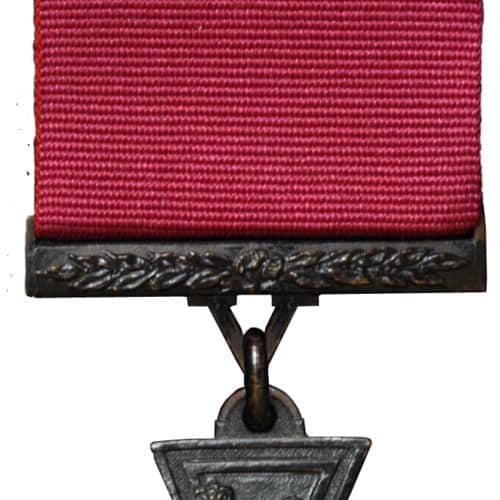WW2 15: gurkhas
This hat badge was worn by a Gurkha soldier who served in in the 10th Princess Mary’s Own Gurkha Rifles in World War 2.
The design includes the kukri, the curved knife carried by all Gurkha soldiers.
The Gurkhas, who come from Nepal, have a distinguished history of service with the British Army, dating back to the 18th century.
During World War 2, the 10th Princess Mary’s Own saw service in Italy and Burma where they were honoured for their bravery in several battles.
In a famous engagement in 1945, Rifleman Ganjabahadur Rai fearlessly charged two German soldiers, killing them both with his kukri, before he was killed himself.
This is a Victoria Cross medal, the highest gallantry award in the British Army. These are only awarded to the very bravest soldiers.
In total, the Gurkhas have been awarded 26 Victoria Crosses.
One of these was awarded to Ganju Lama, who in the Burma campaign in May 1944, single-handedly used an anti-tank launcher to destroy two Japanese tanks, despite already being injured.
In 2004, all Gurkhas who had served in the British Army won British citizenship after a long legal battle. Many settled in Folkestone with their families and have developed close and lasting links with the town.
The Royal Gurkha Rifles (which now includes all Gurkha soldiers in the British Army) are based at Shorncliffe in Folkestone.
Fascinating Fact
The 10th Princess Mary’s Own Gurkha Rifles distinguished themselves from other Gurkha regiments by carrying silver-handled kukris, made specially for them in Nepal.
You can find out more about the Gurkhas at the Gurkha Museum.
Fascinating Fact
The 10th Princess Mary’s Own Gurkha Rifles distinguished themselves from other Gurkha regiments by carrying silver-handled kukris, made specially for them in Nepal.


